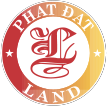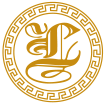TSR20 RUBBER
CONTRACT SPECIFICATION
| Trading Screen Product Name | SICOM TSR20 Rubber | |
| Commodity Code | ZFT | |
| Contract Size | 5 ton/ lot | |
| Price Quotation | cent / kg | |
| Trading Hours | Monday – Friday 06:55 A.M – 05:00 P.M |
|
| Minimum Price Fluctuation | 0.1 cent / kg | |
| Contract Series | 12 months starting with current month, with next consecutive month added upon each month's expiry. | |
| Delivery Registration Day | The fifth business day prior to the First Notice Day | |
| First Notice Day | Last day of trading of the month preceding the Delivery Month. | |
| Last Trading Day | Last day of trading of the month preceding the Delivery Month. | |
| Margin | As MXV required | |
| Position Limit | As MXV required | |
| Price Limit |
|
|
| Settlement Method | Deliverable | |
| Quality Standards | Standards are detailed below |
QUALITY STANDARDS
In accordance with the regulations of TSR20 (Technically Specified Rubber No. 20) Rubber traded on Singapore Exchange (SGX).
Product infomation
Introduce
Rubber is an industrial plant of the genus Hevea Brasiliensis, native to the Brazilian Amazon. The tree has resin (latex) as the main raw material in the production of natural rubber. The rubber tree was once known as white gold in the first half of the 20th century because of its great benefits.
In Vietnam, rubber is grown on a large scale, covering the whole country. Rubber tree quickly became a key industrial tree and one of the three agricultural sectors that contributed the most to Vietnam's export turnover.
Natural rubber contracts are also frequently used for hedging or investment. TSR20 rubber is traded at the Commodity Exchange of Singapore
Characteristics
Rubber trees grow well in the humid tropics, with an average temperature of 22°C to 30°C (best at 26°C to 28°C), needing a lot of rain (preferably 2,000 mm) but not Resistant to flooding and wind. Rubber trees can withstand drought for about 4 to 5 months, but latex yield will decrease.
All natural rubber products have good mechanical properties, especially durable, good tensile strength. The outstanding property of natural rubber compared to synthetic rubber is its bounce and good resilience. Natural rubber, after being stretched, recovers almost completely to its original size when released and then slowly recovers some residual deformation. Products made from natural rubber have very high fatigue resistance, used in continuous motion applications. According to the report of the International Rubber Research Organization (IRSG), about 60-65% of natural rubber production is used in the tire and pneumatic car industry; 8% is used for energy transmission belt products, conveyor belts, gaskets, seals, pipes; about 6% are used for medical glove products and the remaining 9% are for other needs.
Product
Natural rubber latex has two main types of products: water latex (latex) and dry latex (TSR). use. This product also includes groups such as latex smoked sheets (RSS), (Figure 2). Graded according to cleanliness, color and absence of defects such as air bubbles that can be seen with the naked eye, RSS is processed in block form according to the standards of each country.
Dry latex is rubber latex in the form of blocks, developed due to the demand for technical rubber. Mass rubber production is basically the conversion of wet raw rubber into granules by rapid and continuous processing techniques. Dried samples or granules are agglomerated into solid rubber blocks. Dried latex products are mainly used to produce tires, auto parts, conveyor belts, etc.
The group of the largest rubber producing countries in the world includes: Thailand, Indonesia, Malaysia, Vietnam, India, China, etc. In which, Thailand usually accounts for about one third of rubber production worldwide.
Southeast Asia is the region with the largest export volume in the world with leading countries such as: In 2018, Thailand was the world's largest exporter of natural rubber (about $4.6 billion, accounting for $4.6 billion). about 24.8% of export value followed by Indonesia, Vietnam and Malaysia.
Importing countries include the world's two largest economies, China (about 3.6 billion USD), accounting for about 25% of import value. Next is Mx with 1.7 billion USD, accounting for about 12% of the value. (Figure 5)
Factors affecting the price of rubber
* Influenced by oil price: often fluctuates in sync with oil price
* Effects of currency fluctuations, especially the Yen
* Affected by weather and policies in rubber producing and consuming countries











